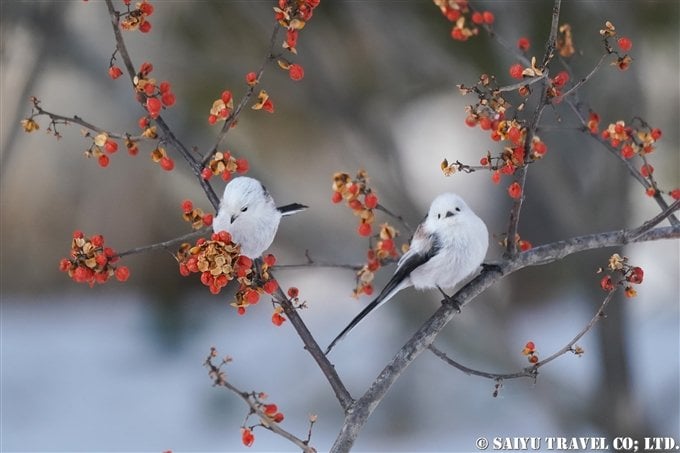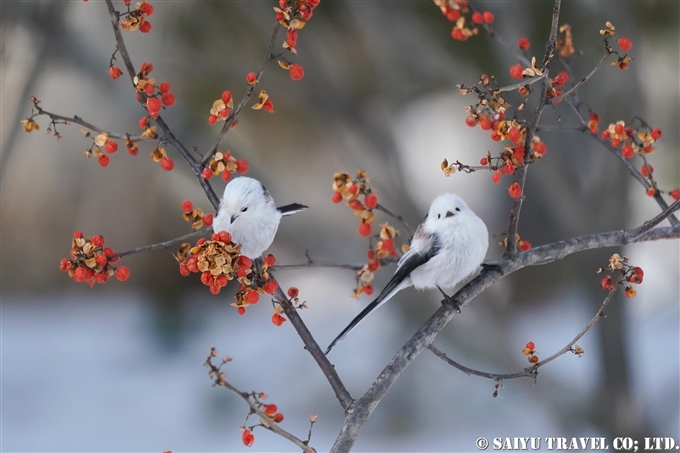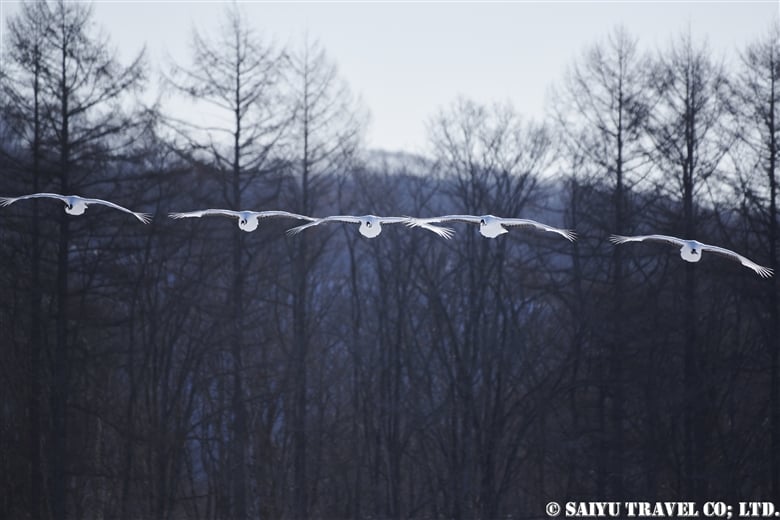
During this winter, we were able to observe many birds, including red-crowned cranes and Ezo Ural owls. The number of photographers from abroad has also increased considerably—especially in Tsurui Village, where red-crowned cranes can be seen. Over 200 people gathered on the Otowa Bridge to photograph the birds sleeping in the river.
Near the Otowa Bridge, from January to early March, temperatures drop below -15°C, and on humid days, a phenomenon known as “Steam Fog” in which steam rises from the river, can be observed. The white breath of the red-crowned cranes as they chirp at each other is beautiful, and the large snowflakes that fall create a magical scene.
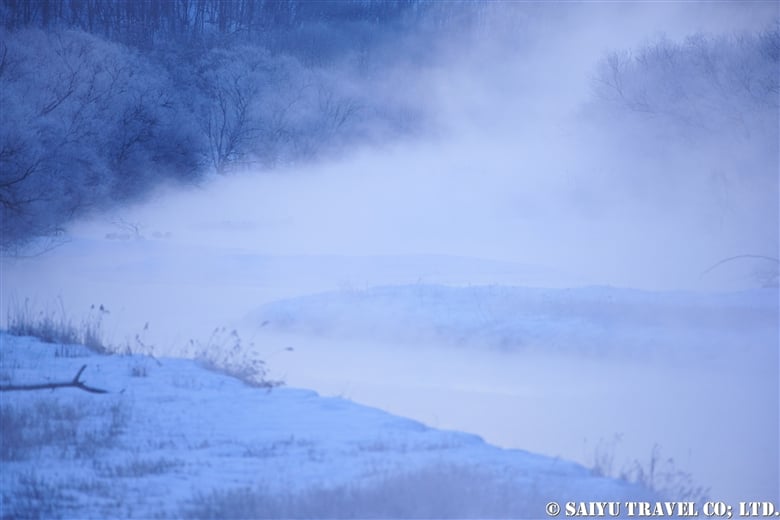
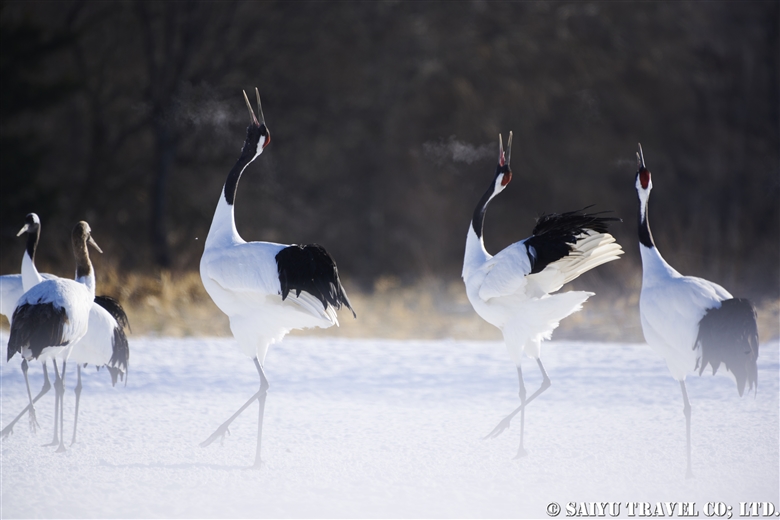
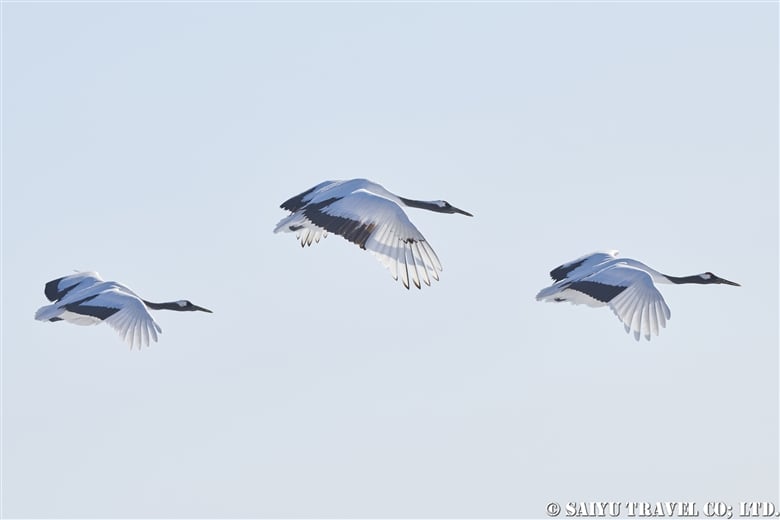
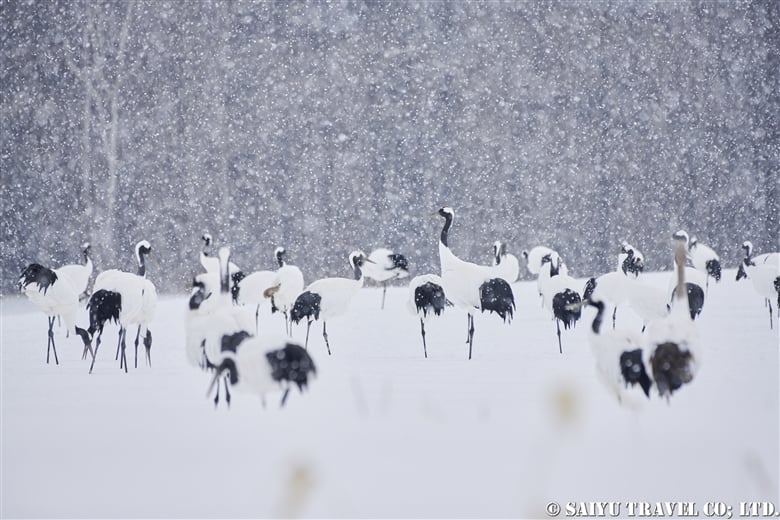
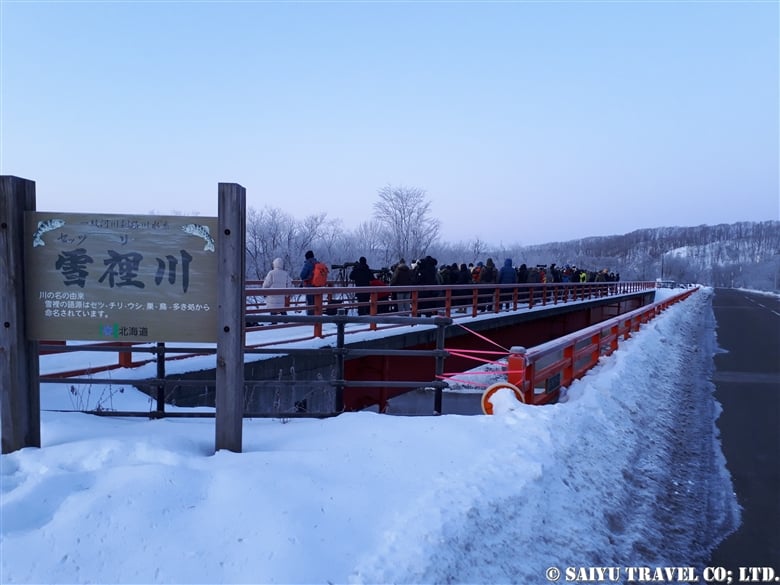
Ezo Ural owls are usually found in the trees they’ve chosen for their fixed nest sites, but they may change their location from year to year. We speculate that this may be due to changes—precipitated by the amount of snowfall in a given year—in their rodent-hunting spots. In the month of February, at the nests we observe every year, we can see the owls stand side by side in pairs—for them, this is courtship season. In some nests, we could not see the pair line up together, perhaps because one of the two had disappeared.
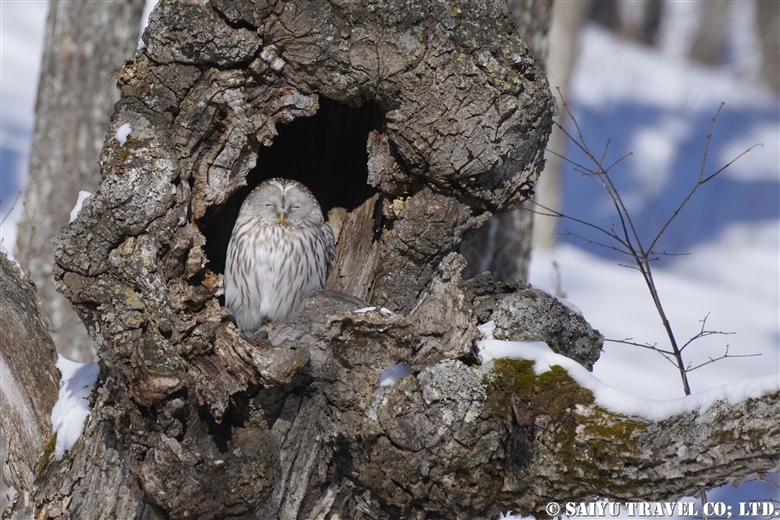
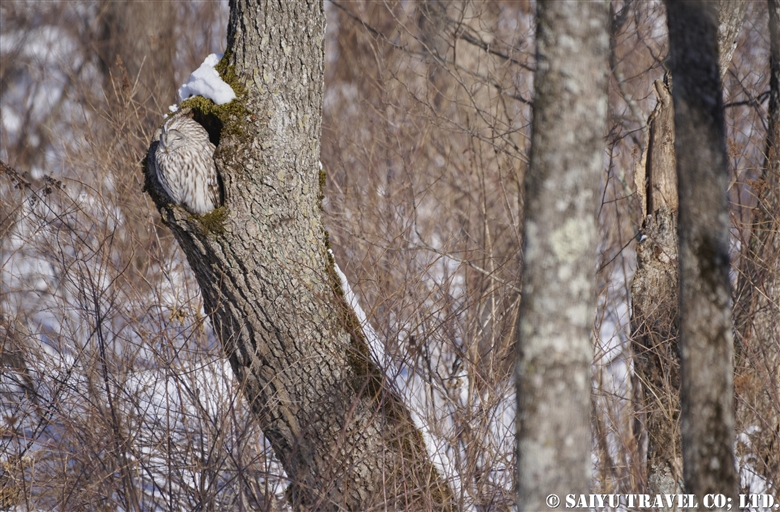
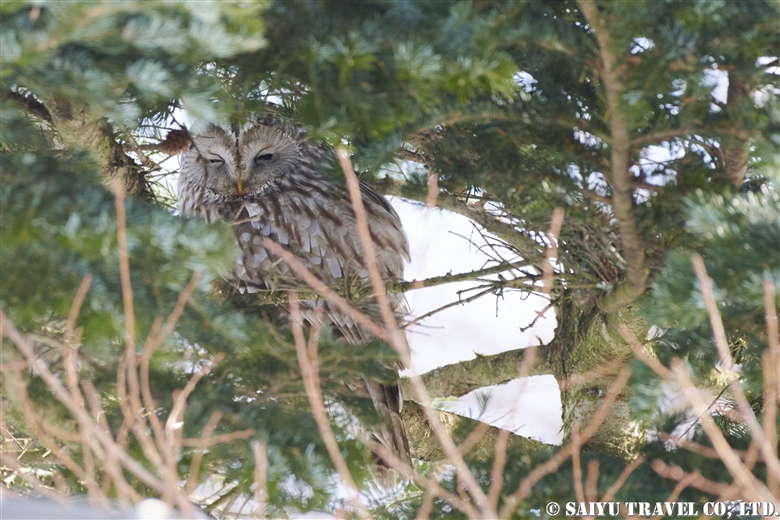
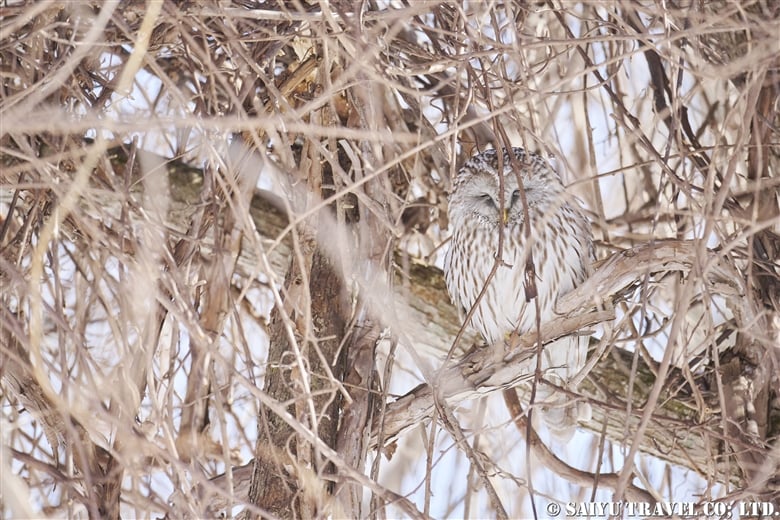
The long-tailed tit is the most popular wild bird in Hokkaido nowadays. In winter, they look like snowmen when viewed from the front, puffing up their feathers to ward off the cold.
Long-tailed tits are only about the size of a ping-pong ball and usually hang from branches at the top of trees, pecking at insects and winter buds. If you are lucky, they will come down to a lower branch to catch their food, and you may even be able to photograph them at eye level.
Food is scarcest from February to March, and in addition to the food they normally eat, they strive to eat really small plant seeds to sustain themselves.
In April, insects appear, ensuring that the long-tailed tit will be well nourished. By May, we can expect to see new chicks.
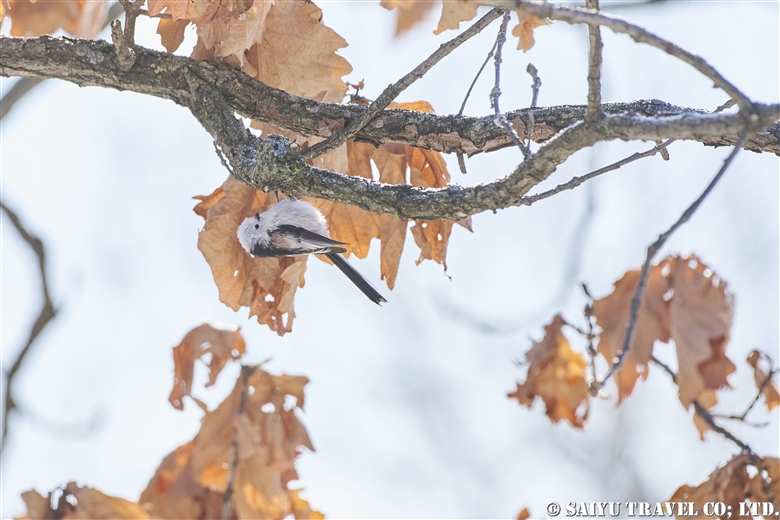
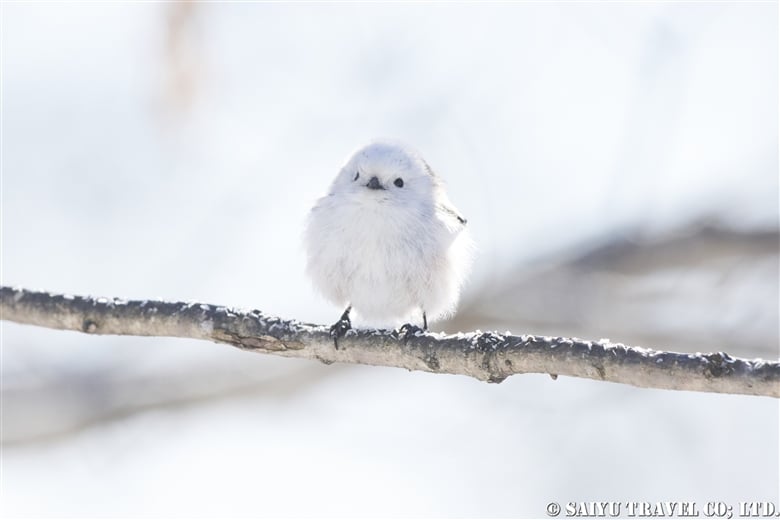
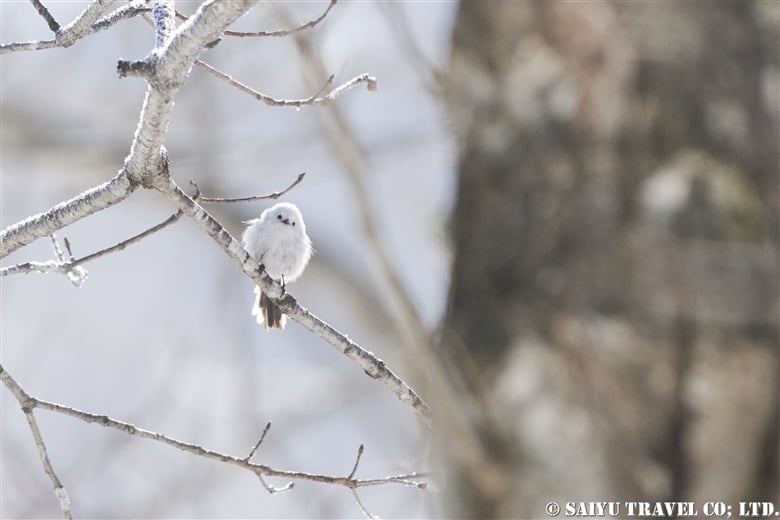
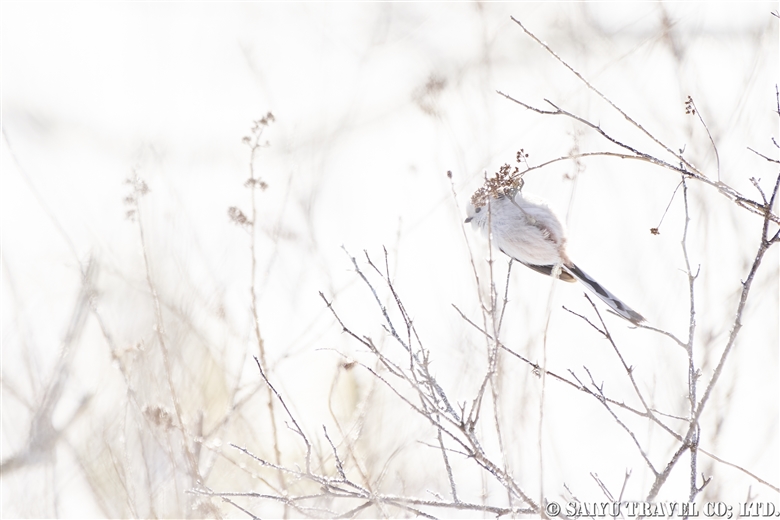
Red-crowned cranes, Ezo Ural owls, and long-tailed tits are all difficult to observe from mid-March onward, as their activity patterns change dramatically for the breeding season.
Mid-February, when they are actively courting, is the best time to observe these three species.
Photo & Text: Kaito IMAHORI
Observation: Tsurui Village, East-Hokkaido
*Contact us, Saiyu Travel for more information about wildlife and bird watching in Hokkaido. We can make various arrangements for your trip. We have a guesthouse, Shiretoko Serai, in Rausu, Shiretoko Peninsula.
*Youtube : Wildlife of Japan
Tags: Birds of Japan, Tsurui village, Bird photography in Japan, Shiretoko peninsula, Bird Photography Hokkaido, Long-tailed tit, Tsurui, Shiretoko, Bird Watching Japan, Ezo Ural owl, Red-crowned Crane, Wildlife of Hokkaido, Photography tour of Red-crowned carane, Wildlife of Japan, Birds of Hokkaido










